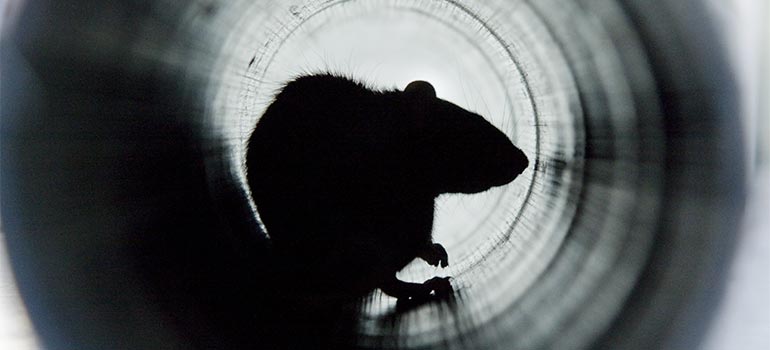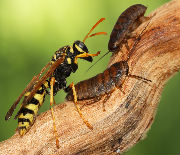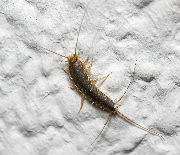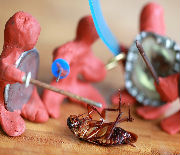
Having rodents coming out of your drain honestly feels horrifying. It’s not something that you can ignore. While it seems like a scene from a scary movie, it’s not uncommon to happen in either cities or rural areas.
This article explores who is responsible for rats in your drains, clears up the common fears around them, and explains how they manage to get there in the first place.
Table of Contents
Who is legally responsible for rats in the drains?
The trouble with rats in drains is that no one’s ever quite sure whose problem it actually is. Is it yours? The council’s? The water company’s? Things get murky fast.
To be blunt, though, the answer really hinges on where the invasion began, and that’s where most of the confusion starts.
Private homeowners
If the sewer sits entirely within your property line, the responsibility falls on you to get it sorted. The trouble is, it’s not always easy to tell where your bit ends and the next begins.
Enter the drainage specialist. They’ll track down where things went wrong, figure out how deep this problem goes, and let you know whether it’s your responsibility or the local authorities’.
Landlords or tenants
If you’re renting and have rats in the drains, you’re off the hook for most of this. Landlords are the ones who deal with pest control and structural issues. If there are rats in the drains, it’s their responsibility to sort out whatever’s causing it.
As a tenant, your role is pretty straightforward. Flag the problem and maintain basic cleanliness. Most tenancy agreements spell this out clearly enough, so give yours a quick scan if you’re wondering where the line gets drawn.
Local water authority or council
There are times when the source of the pest problem is coming from a public sewer. Should you suspect this, you must contact your local water authority to investigate.
If you’re unsure who that is, you can check via your water bill or on the OFWAT (Water Services Regulation Authority) website.
However, these water companies are responsible only for maintaining public drainage systems—pest control does not fall under their duties.
Check also:
Why are there rats in your drains?
It’s an unsettling thought that something alive, like a rat, lives in your drain rent-free. But they’re not down there randomly. There’s a reason your sewers look like prime real estate to them, and understanding why puts you ten steps ahead of a repeat visit.
- Damaged or old pipework: Tiny cracks or loose seals act like a front door for them. Older clay pipes and badly fitted PVC joints basically roll out the welcome mat.
- Redundant or unused pipework: Abandoned drains allow rodents to move between properties and access food sources. Have a qualified professional cap or seal them to prevent this.
- Poor maintenance: Drains blocked with grease and food scraps attract critters. Pouring oil down the sink is easy to avoid, but most people still do that.
Signs that there could be rats in the drain
Rats cue you to their presence before they make a grand entrance. Maybe it’s scratching beneath the floorboards after dark or that faint scuttling behind the walls when everything goes quiet.
Odd smells from the sewers and gnaw marks around pipe covers also mean there are rats in your drains.
Slow-draining pipes usually point to nesting material blocking the flow. Finally, if you find small piles of dirt near drain exits or droppings, you’re most likely living the dreaded nightmare.
While it might not seem like it but it is actually a good thing to catch these signs this early because it means you still have time to prevent it before it turns into a full-blown infestation that would be tough to clean.
Can rats come up the toilet?
Unfortunately, yes. Rats can, in fact, come up the toilet. However, it rarely happens.
The likelihood of this happening comes from their ability to swim for long periods, hold their breath for minutes, and climb vertically inside soil pipes. Toilets are sometimes the way they make their exit after getting into your drainage system.
Check also:
How do you get rid of rats in your drains?
By now, you know why rodents might be getting into your drains and who’s in charge of handling them. So, we’re going to explain what to do if you’re dealing with rats in drains and the issue comes from your private pipework.
There’s no single fix for this. It usually takes a mix of steps. This includes finding out how they’re getting in and blocking those entry points. Then, you can deal with any remaining ones.
Identifying how rats are getting in
You can’t tackle a rodent problem until you figure out how they’re getting in. That’s always step one when dealing with rats in your drains.
The trouble typically begins where the pipes connect to the building. The joints might look solid, but even the tiniest gap works in their favour. Their routes are surprisingly creative, usually in the last places you’d think to inspect.
If an issue appears to stem from drain damage or defects in the pipework, a qualified plumber or drainage engineer should carry out further investigation to locate and repair the fault. In some cases, fitting a rat flap (rat blocker) in the affected drain can also provide a long-term solution by stopping rodents from travelling up through the pipes while still allowing wastewater to flow out normally.
Eliminating the infestation
Once you’ve found and dealt with the drains, the focus shifts to the rodents already inside. This is where rat control professionals have the edge.
They use humane methods that actually work. Every bait placement is calculated, never careless, and always out of reach for pets or wildlife.
Trying to handle it yourself? It might look manageable, but when critters use underground pipes or concealed access points, DIY methods fall short. Professionals handle what’s out of sight.
Pest-proofing the property
Once the entry points have been identified and the infestation controlled, the next step is to carry out pest proofing. There are several effective materials and methods available, depending on the location and type of access point.
Cement or mortar works to seal things permanently. Other gaps can be covered with fine stainless steel mesh. Size doesn’t matter. Even the smallest opening needs blocking, or the rats will find their way back in.
Some professionals combine both methods. They will embed mesh into wet mortar, creating a reinforced barrier that’s difficult to gnaw through. The mesh alone works for larger openings or areas needing ventilation, while cement offers a permanent seal.
For pipes specifically, expanding foam gets used occasionally, though it’s less durable long-term. The material choice depends on the location and whether you need airflow or drainage.
Preventive measures and hygiene
After sealing your drains, remove whatever might bring them back around. You want your property to be the least appealing spot around. Start with these changes:
- Keep food scraps and grease out of your sink. They pile up in the pipes and create a feeding station.
- Secure bin lids tightly. These creatures are smart enough to flip open loose ones.
- Make sure to always keep your toilet lid closed if you don’t want any surprises.
- Your garden matters as well when dealing with rats. Stacked wood, overgrown shrubs, and exposed compost piles create ideal nesting zones.
- Pet food sitting out after dark and bird seed spilt beneath feeders attract rodents like clockwork. Stay on top of cleanup even when it feels tedious.
Takeaways
- Responsibility depends on where the drain is. If it’s on your property, you must handle it yourself. Renters should inform their landlords. Water authorities investigate anything wrong with the public sewer system.
- These pests find their way in via damaged pipework and neglected drainage systems. You’ll notice scratching sounds, slow-moving water, and gnawed surfaces before you see them.
- The solution involves locating where they’re getting in, closing off those access points with mesh or mortar, and getting expert help.
- Keep them out by not throwing grease in your sink, locking down bins, clearing garden clutter, and removing pet food promptly.









